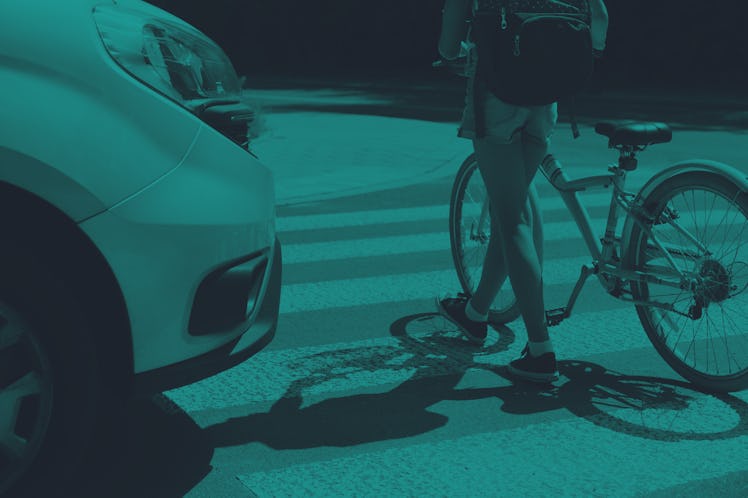The Scary Reasons Traffic Deaths Are The Highest In 20 Years
Traffic-related deaths are now the highest they've been in 20 years. Why? Here's what we know.

The National Highway Traffic Safety Administration (NHTSA) is sounding the alarm following its early estimates of traffic fatalities for the first quarter of 2022. The agency released estimates on August 17th that nearly 10,000 people have died in motor vehicle crashes in the first quarter of 2022, up 7% compared to the first quarter of 2021.
In seven states and D.C., per the Washington Post, road deaths are up by 50%. In 2021, deaths soared to a 16-year high. Now, in 2022, we've hit a 20-year-high; the NHTSA report indicates that we've reached the highest number of first-quarter fatalities since 2002. And these jumps in traffic deaths continue to climb despite fewer vehicles on the road.
The numbers follow a pandemic trend of increasing traffic deaths. For example, traffic deaths were up by more than 10% in 2021 over the previous year. And according to ABC News, the NHTSA reported 36,355 people died on U.S roads in 2019. That number grew in the following years: in 2020, there were 38,824 deaths and in 2021, 42,915.
"We're talking about three years in a row of traffic deaths, not just being up but being up significantly," Jonathan Adkins, executive director of the non-profit Governor's Highway Safety Association, said to ABC.
So, why are traffic-related deaths on the rise? Adkins says the surge in traffic deaths is related to multiple factors, including the prevalence of dangerous driver behaviors and less traffic enforcement on roads. More people are driving recklessly, not using seatbelts, speeding, and even driving drunk.
"States are telling me all across the country that speeds are up, drivers are just continuing to speed," Adkins said. "We really need to bring some of the same attention to speeding that was brought to drunk driving and distracted driving. If we were to get drivers to slow down even a little bit, that make a big difference."
The Biden Administration's Department of Transportation has said they're making it a priority to focus on measures to curb traffic fatalities. This includes the Bipartisan Infrastructure Law, which was announced in January. The long-term plan focuses on individual driver behavior, safer road design, safer vehicles, safer speeds, and better post-crash care, the NHTSA explains. $5 billion alone will go to grants that can protect pedestrians and cyclists.
The NHTSA also has several other programs aimed at creating safer roads. For example, it’s Drive Sober or Get Pulled Over Labor Day campaign aims to reduce impaired driving, and its Speeding Wrecks Lives public outreach campaign seeks to remind drivers of the dangers of speeding. Regional measures to fight traffic deaths include grants to address speeding and impaired driving and to protect vulnerable road users. Some of those vulnerable road users are pedestrians.
For example, in 2019, 16% of car accident deaths that involved kids were of pedestrians, and 4% of deaths were of people on bicycles, according to a report by The Insurance Institute for Highway Safety. Vehicle safety, then, should not only be a matter of how safe people are in their cars, but also how safe the people outside of their cars are, too. Measures are in the works to improve this area of traffic safety, including a new standard for vehicle safety ratings, which will include pedestrian safety for the first time ever.